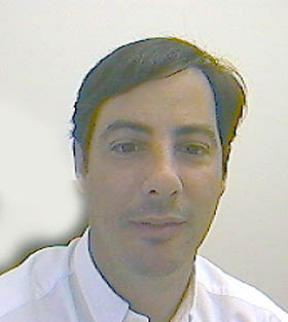Instant messaging seems to have landed on many home and work computer desktops. IM is essentially the text version of a phone call maybe better and certainly cheaper.
Many people are choosing text-based IM over phone calls and e-mail preferring its immediacy and efficiency in making real-time contact with friends and colleagues.
My husbands IM business deals with a partner in Seattle, one in East Tacoma and another on Vancouver Island on a daily basis.
The growing use of Instant Messaging is evolving with the use of video and audio communications an obvious marriage made in heaven.
New York-based PalTalk (PalTalk.com) has achieved a phenomenal landmark with its cross-platform compatible IM: It has had 18 million downloads of its open platform IM software since they launched in early 1998.
Jason Katz, founder of PalTalk, took a break to talk about how people online are using his IM technology to do fascinating things like peace summits, karaoke and dating, and how even our troops overseas use PalTalk to communicate with family and friends via video for free.
Q: How does PalTalk work?
Katz: PalTalk is an instant messenger, much like MSN or AOL. It also interoperates with those messengers so you can have your buddies from AOL or MSN or Yahoo appear under PalTalk lists.
Youll have just one buddy list. More importantly, you can do real-time audio and video.
There are large groups of people speaking on all kinds of subjects that you can hear in real-time. You can respond to them and broadcast video, too. Its much more interactive than most of the other services.
Q: Was there a certain catalyst that made you want to start PalTalk?
Katz: I was an instant messenger user myself and became frustrated that I had to type everything.
I thought it was a nice idea that, instead of clicking on a buddy and typing, perhaps click on my buddy and talk, using a microphone and speakers which enables you to talk all over the world for free for as long as you wanted.
Thats what we launched in January 1998.
For some perspective, that was even before Yahoo or Microsoft had an instant messenger. There was just AOL and ICQ.
Q: Give us a run down on the physical hardware needed to use PalTalk.
Katz: Thats a great story, actually. When I started so long ago, our initial developer was using a Pentium 60. I even ran it on a 486although I hate to say that.
Most computers arent going to have a problem today. Very minimally, 64 megs of RAM, any Pentium chip, sound cards so you can hear and a microphone.
A USB port is good if you want to do the video and an inexpensive WebCam. Its okay if you dont have a WebCam because you can still view other people.
Q: Do you have your own media player or does the user have to have the Windows Media or Real One player?
Katz: We run on any Windows operating system. We have users from every country so we constantly have the issues of hardware. But we run on everything.
Q: Do you have to have a broadband connection to use PalTalk?
Katz: Its not required because we pre-date a lot of heavy bandwidth in that the actual audio streams are only about 2k per second which equates to a 20k connection.
So a 28.8 dial-up modem is what we premise this on. If youre looking for video refreshing quickly, of course thats not going to happen on a 28.8, but you still will get the number of video windows you want and they will still refresh but not nearly as fast.High bandwidth is a much nicer experience.
Q: What are some of the ways you see PalTalk being used?
Katz: The great thing about PalTalk is we have an excess of 40,000 people simultaneously connected to the system.
Im not too far from Madison Square Garden in New York City so when I look at that, I figure thats two Madison Square Gardens filled up with people.
The most dynamic uses are in the virtual chat rooms. They are audio and video enabled and users can create their own rooms. Some categories are new friends, distance learning, bi-language rooms such as Europe, Spanish and Portuguese and Asia.
We have religious rooms, health and parenting, computers and high-tech, which is a great place to get advice when you have problems with your computer. We have a pretty active karaoke music section where aspiring Britney Spears sing for other people.
Q: Karaoke chat rooms just fill your niche perfectly because you are the only ones with audio and video.
Katz: Yeah. Its really the content. Even the best technology, if not packaged in the right way for the consumer to use, is not very useful. This is a thriving, active community.
Q: I hear people taking part in Operation Iraqi Freedom are using PalTalk.
Katz: We understand that people that are being deployed on Navy ships, which are connected to the Internet, are able to use those with their friends and family at home to speak in real-time and view videos of their family.
That was certainly not something I anticipated when I started this company in 1998. But the people figure out the best use of technology.
Q: I just hope Saddam doesnt have his WebCam hooked up to watch what our Navy guys are talking about!
Katz: Theres no high security stuff here! But it is a very vibrant area from sports to computers to the stock market to social issues.
Q: Any politics?
Katz: After the Bush-Gore election in 2000 we didnt know who the president was for six weeks.
We had a persistent room called Bush-Gore 2000 that had several hundred people in it for six weeks talking about the issues, the litigation, whether there was going to be a recount and it was the most vibrant place.
We are providing a worldwide forum for people to sound off in real-time not to just watch, but participate.
Q: Any hot current events?
Katz: Of course everyones talking about whats happening in Iraq and talking about the best strategy to deal with it.
I dont think this has been done anywhere by anybody: We had a Middle East peace summit online with PalTalk.
We brought in six people three for the Israeli side and three for the Palestinian side.
We had about 700 people in the group who participated from all over the world.
Thats an extraordinary thing to have the whole world participate.
I dont think theres any other way to do that, except by computer. For one-on-one conversation, Im going to use the telephone.
But if I want to talk with a group with video as well and text and transfer files, there is no better way to do it than online and that is what PalTalk.is doing.
Q: You recently launched a personal service that is a dating network.
Katz: Its called PalPersonals.com. You can search by your region and interests and age group and post video clips of yourself, which is much better than static words.
Coming very soon will be a real-time search capability on all those factors.
Therefore, Ill be able to search New York City in my age group for people who like to snowboard.
I can see if theyre online and broadcasting video in real-time and contact them. Thats really incredible and beyond what everybody else is doing.
Q: Give us the details on how to get PalTalk.
Katz: Go to PalTalk.com and download the software, which is free. All of the functionality – including the instant messaging, the interoperability with other programs, the ability to do voice conferencing in groups is all free.
If you want to view somebody elses video and youre not a paid member, you will get a still photo rather than a refreshing image.
If you want to sign up in order to get the video to run, you pay either $29.95 for a year or you pay $50 a year for Pal Plus Six that has six video windows instead of 3 and a six frames per second refresh rather than three.
We have managed to be a profitable Internet company and survived all the carnage, entirely due to a very loyal user base who have signed up with us.
Q: Thats because you have a product that has no downside of all. Its all good.
Katz:That actually proves that you need a good business model and if your expenses are in line with your revenue, theres no reason you cant thrive, even in a poor market.
Dana Greenlee is co-host, producer and engineer of the WebTalkGuys Radio Show, a Tacoma-based radio and Webcast show featuring technology news and interviews.







